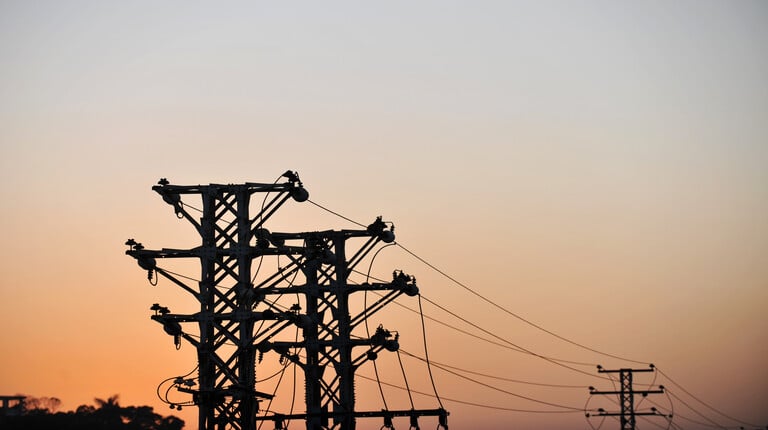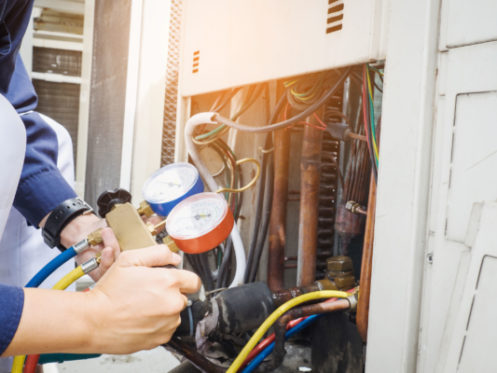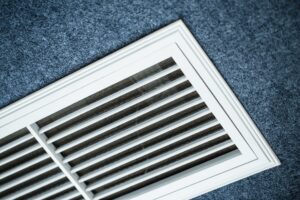Public Safety Power Shutoffs in California: Your Guide to Staying Safe and Prepared
Southern California’s wildfire season is fiercer than ever, and Public Safety Power Shutoffs (PSPS) are becoming a reality for many homeowners. These temporary outages, initiated by utilities like Southern California Edison (SCE), prevent wildfires sparked by electrical equipment during high-risk conditions like strong winds or dry vegetation. At Air-Tro, we’re here to help you stay prepared with practical solutions—such as backup generators—and expert advice to keep your home safe and comfortable during outages.
The Reality Behind California’s Power Shutoffs
The devastating Eaton Canyon fire, with its $15 billion claim against SCE in ongoing litigation, has utilities on edge, making PSPS a critical safety measure. SCE’s recent communications to their customers highlight that 2025’s low rainfall and gusty winds increase outage risks, especially in fire-prone areas. These shutoffs can disrupt daily life, sometimes lasting over 24 hours. To stay powered during a PSPS, many homeowners are turning to backup generators, which provide reliable electricity for essentials like lighting, refrigeration, and HVAC systems. Preparation is key to minimizing inconvenience and ensuring safety.
What Exactly Is a PSPS?
A Public Safety Power Shutoff is when utilities temporarily cut power to prevent equipment from igniting wildfires during dangerous weather, such as high winds, dry vegetation, or low humidity. SCE uses over 1,800 weather stations, 200 wildfire cameras, and supercomputer-driven fire simulations to determine when shutoffs are necessary.
How Will I Be Notified?
SCE sends alerts via email, text, or phone in multiple languages. Sign up at SCE’s PSPS Alerts page to stay informed. Note that sudden weather changes may limit advanced warnings.
Who’s Most at Risk?
High fire risk areas see more frequent PSPS events, but all Southern California residents should be ready. If you rely on electricity for medical equipment, check out SCE’s Medical Baseline Program for support.
How Is SCE Tackling Wildfire Risks?
SCE is reducing outages by:
- Replacing 800 Circuit Miles of Bare Wire with Coated Wires, Cutting Interruptions by 70%.
- Burying Power Lines in High-Risk Zones.
- Clearing Vegetation with Local Agencies.
- Partnering with Fire Departments for Aerial Fire Suppression via the Quick Reaction Force.
Learn more at SCE’s Wildfire Mitigation page or explore CAL FIRE’s wildfire preparedness resources.
FAQ: Answers to Your PSPS Questions
How Long Do PSPS Outages Last?
Outages can range from a few hours to over 24 hours, depending on weather and safety assessments. Track updates at SCE’s Outage Center.
What’s the Best Way to Prepare?
Assemble an emergency kit with water, food, flashlights, and batteries. Use SCE’s Preparedness Checklist and consider a generator for backup power—Air-Tro can help you choose the right model.
What Resources Exist for Vulnerable Households?
SCE offers support for customers with access and functional needs at SCE’s Assistance Programs. Community Resource Centers and Crew Vehicles provide help during outages—check locations on SCE’s Outage Map.
Is It Safe to Use a Generator?
Yes, but never run gasoline generators indoors, and don’t connect them directly to household circuits without proper safety equipment to protect yourself and utility workers. See Ready.gov’s Generator Safety Guide for tips. Your best bet is a whole-home standby generator that is equipped and installed by a professional provider.
How Do I Protect My HVAC System?
Unplug your air conditioner and electronics to avoid surge damage when power returns. Regular maintenance ensures resilience—schedule a tune-up with Air-Tro.
Steps to Get Your Home PSPS-Ready
- Enroll in Alerts: Register at SCE’s PSPS Alerts page for real-time updates.
- Assemble an Emergency Kit: Include water, non-perishable food, a battery-powered radio, flashlights, and extra batteries. The Red Cross Wildfire Safety Guide offers detailed kit-building tips.
- Plan for Medical Needs: Apply for SCE’s Medical Baseline Program if you use powered medical devices.
- Invest in a Generator: A backup generator can power essentials during outages. Air-Tro offers energy-efficient models and expert installation—learn more at airtro.com.
- Safeguard Electronics: Unplug appliances and learn to manually operate electric gates or garage doors.
- Maintain Your HVAC: A well-maintained system handles outages better. Call Air-Tro for professional service.
Being Ready Matters More Than You Think
California’s changing climate and rising wildfire risks make PSPS outages a necessary precaution. SCE’s efforts—like hardening 90% of distribution lines in high-risk areas by the end of 2025 and using advanced weather monitoring—help reduce risks, but homeowners must take action. A reliable generator or a tuned-up HVAC system can make all the difference during a shutoff.
At Air-Tro, we’re committed to keeping your home comfortable and powered, no matter the circumstances. Our generator and HVAC solutions are designed to give you peace of mind during wildfire season.
Get Ready – and Stay Ready – with Air-Tro’s Expert Support
Don’t let a power shutoff disrupt your life. Contact Air-Tro to explore our range of backup generators, schedule an HVAC maintenance visit, or get personalized advice on staying prepared. Call (626) 357-3535 to ensure your home is ready for any outage.
The post Your Guide to Public Safety Power Shutoffs (PSPS) appeared first on Air Tro | Air Conditioning Los Angeles | Air Conditioning Pasadena.
Whether you require installation, repair, or maintenance, our technicians will assist you with top-quality service at any time of the day or night. Take comfort in knowing your indoor air quality is the best it can be with MOE heating & cooling services Ontario's solution for heating, air conditioning, and ventilation that’s cooler than the rest.
Contact us to schedule a visit. Our qualified team of technicians, are always ready to help you and guide you for heating and cooling issues. Weather you want to replace an old furnace or install a brand new air conditioner, we are here to help you. Our main office is at Kitchener but we can service most of Ontario's cities
Source link



